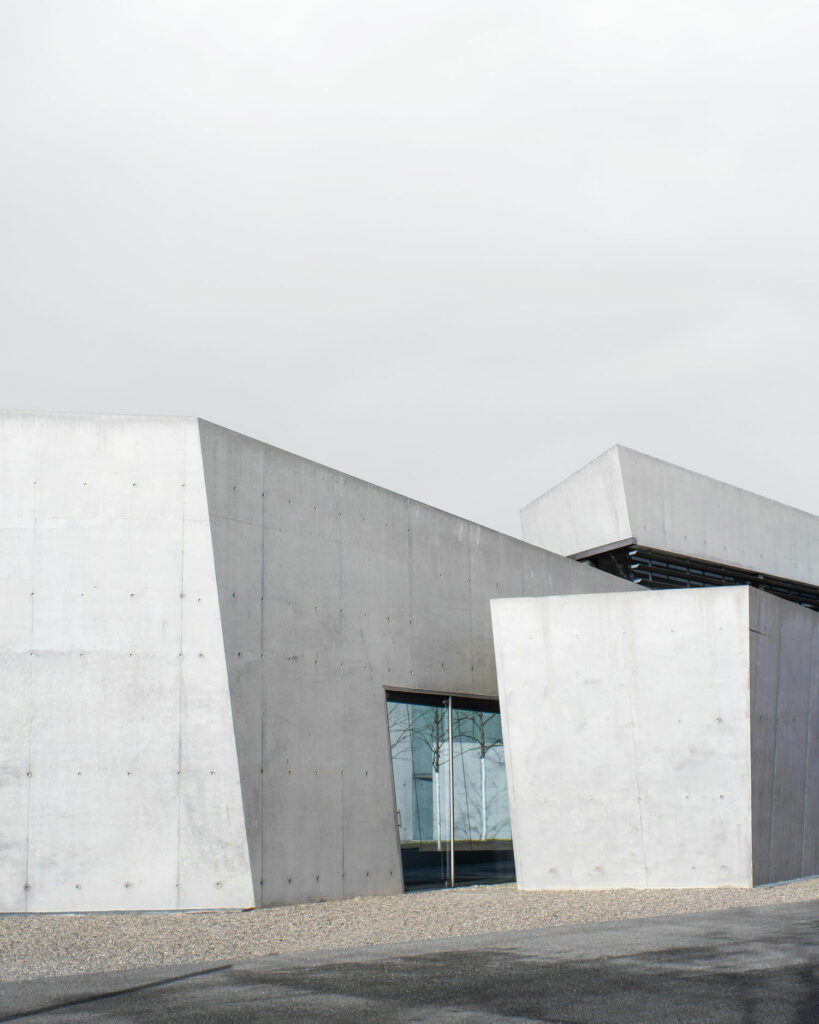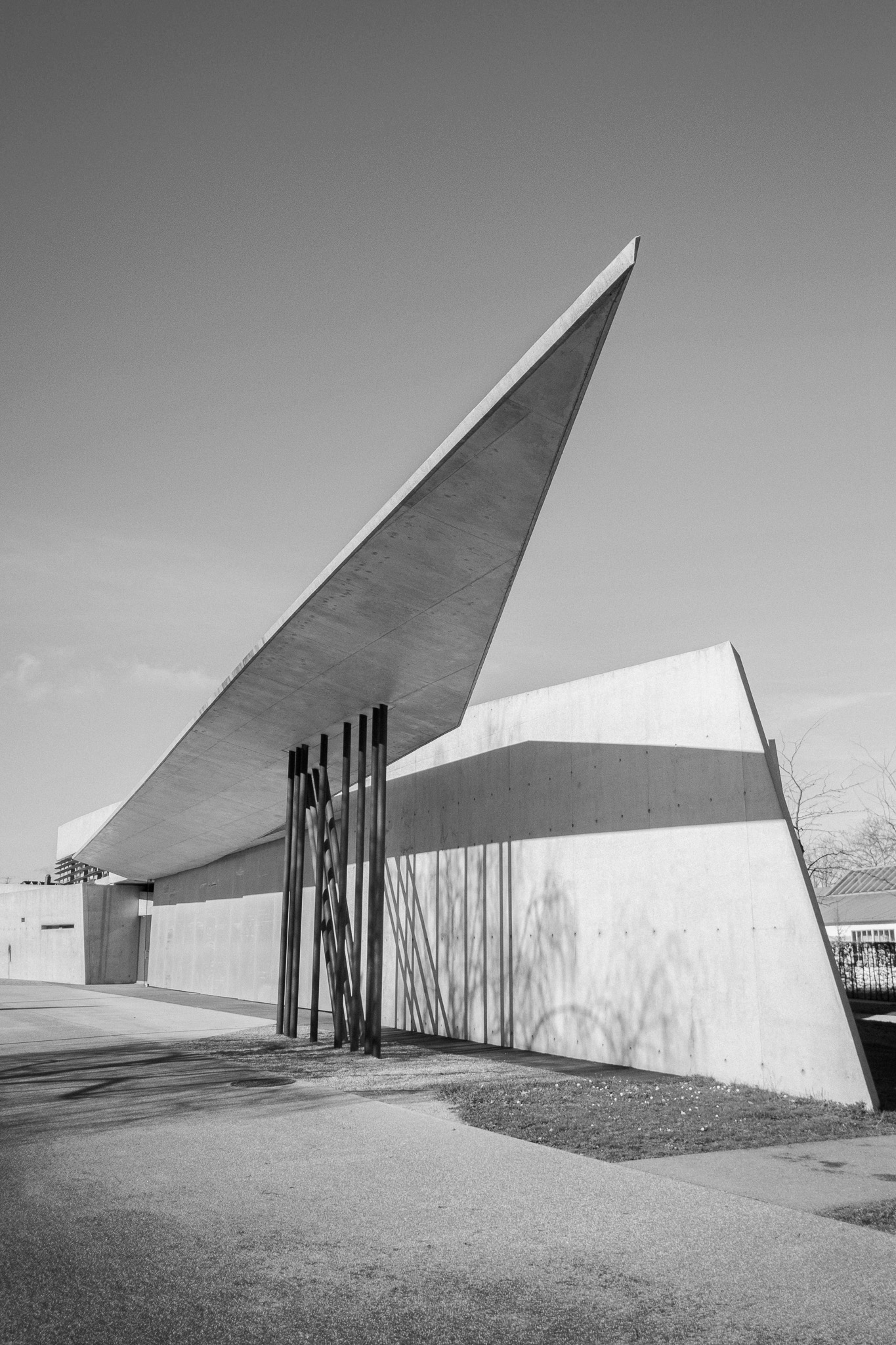The Vitra Fire Station, designed by Iraqi-British architect Zaha Hadid, is located on the campus of Vitra GmbH in Weil am Rhein, Germany. Hadid, a pioneer of deconstructivism, created the fire station, her first realized building project, between 1990 and 1993.
Originally built for the company’s fire brigade after a devastating fire in 1981, the building was created out of the necessity to house its own firefighting unit. It was equipped with rooms for fire engines, changing rooms, showers, a meeting room and a small kitchen. However, the building lost its specific function as a fire station a few years later when the internal fire brigade was disbanded and replaced by a cooperation with local fire brigade units. Today it is used for events and exhibitions.
The building breaks radically with traditional architectural forms. The entire structure is made of exposed, reinforced in-situ concrete, which gives the design clarity and a rugged aesthetic. The absence of any right angles and the use of sloping, sharp-edged surfaces create a sense of movement and dynamism. It is in stark contrast to the rectangular structure of the surrounding halls, creating an exciting dynamic.
This building is ‘movement frozen’ – a vivid, lucid expression of the tensions necessary to remain ‘alert’, to explode into action as required.
Zaha Hadid Architects


The interior design follows the minimalist approach of the exterior architecture. Frameless windows and sliding panels enclose the garage area and emphasize the clarity of Hadid’s architectural vision. Precisely directed light lines provide direct lighting that underscores the geometric forms of the space and emphasizes the deconstructivist character of the building.
The Vitra Fire Station is a key work in Zaha Hadid’s career and is a defining example of deconstructivist architecture. It demonstrates how innovative architectural approaches can create new spaces for experience that challenge traditional ways of seeing and reinterpret the function of a building.

